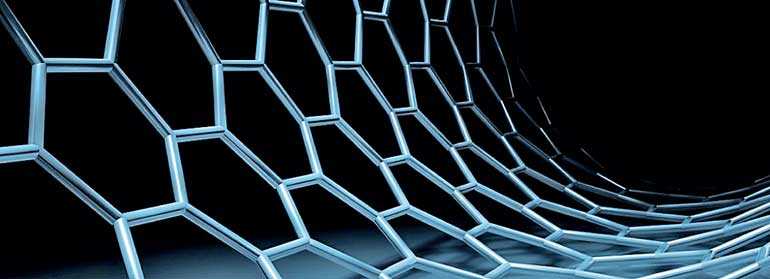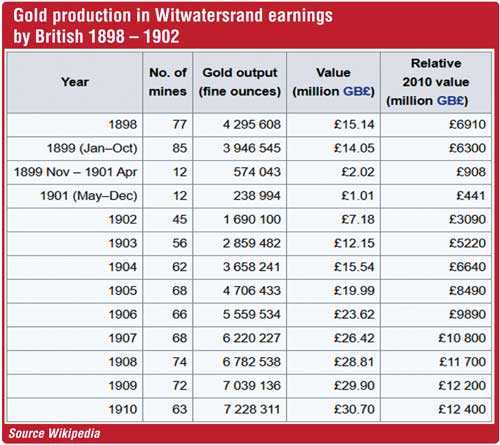Wednesday Jan 29, 2025
Wednesday Jan 29, 2025
Thursday, 5 March 2020 02:34 - - {{hitsCtrl.values.hits}}

Graphene is 200 times stronger than steel and harder than diamond. It’s also flexible and transparent. Graphene is also the best heat and electricity conductor. As can be expected, the research community is very excited about this wonder material, and the business world follows suit
The Economist magazine published an article in 2017 about the new commodity that was fuelling a lucrative fast growing industry. It predicted the possible need of antitrust regulator stepping in to control the monopolising the said commodity, similar to US government intervention to restrain Rockefeller family’s Standard Oil Company in 1800s. Since this publication by the magazine, the topic has generated much discussion and “Data is new Oil” became the common catchphrase in conferences, public speeches and magazine columnists.
The basis of ‘The Economist’ argument was the massive wealth created by data companies during the last decade surpassing the wealth of rich oil companies. There were six energy giants in the 2016 list of top 10 companies in terms of market capitalisation. They were Exxon Mobil (US), Gazprom (Russia), Royal Dutch Shell (The Netherlands), British Petroliam (UK) and Petro China (China). But none of them were in the 2019 list. They were all replaced by digital new kids from US and China whose primary assets are digital intellectual property and data. Seven digital companies, namely Apple (US), Microsoft (US) , Amazon (US), Google (its parent company Alphabet/US), Facebook (US), Tencent (China), Alibaba (China) were occupying the slots and none of the oil companies made it to the top 10 list of 2019. 
Replacement for oil
However, with the rise of electric vehicles and the decline of internal combustion engine for transportation, a question arises whether The Economist magazine got it right. By 2025, the electric battery will become the new oil barrel as the world drives to electrify its vehicles. Then a question arises whether the new oil is data or graphene?
It is a fact that fortunes of data is yet to unfold. Raw fossil fuel in the era of kerosene oil did not become the wonder commodity until the internal combustion engine was invented resulting the proliferation of mass land, sea and air transportation. Similarly data will create its’ augmented wealth when companies develop the real art of monetising the data for business use.
While data companies continue to create wealth, the electric vehicles era will create new wealthy nations and companies. And these new wealthy nations will be the countries rich in natural resources which would be used to fuel electric vehicles.
Growth of electric vehicles
Electric vehicle enthusiasts believe that the era of the internal combustion engine is over. That means era of oil is reaching the end of its life cycle similar to coal automation cycle ended in mid of nineteenth century. The winning electric technology will be the one that allows power units to store energy when the wind blows and the sun shines, while being able to release energy that can respond to the swings in demand. The only widespread and reliable technology at the moment is the lithium-ion battery which is being widely used from the thinnest smartphone to the heaviest electric bus.
The lithium-ion technology has been around for a decade and its mass production and use have made it significantly cheaper over time. It does, however, have its shortcomings, one of which is its inability to store energy for long periods.
On a global scale, electric vehicle sales have a recorded 63% year on year growth in 2018. Figures in 2019 that are yet to be released would be even impressive. Not only electric cars but an electric air craft which can fly more than 500km have already been tested successfully. More electric vehicles on the roads will not only mean cleaner air, but better health and longer life-expectancy.
Cobalt and batteries arms race
Cobalt is used to create the lithium-ion batteries required for electric vehicles and energy storage. The mineral is used to produce lithium-ion batteries used to power electric cars, laptops and smartphones. Critical to the construction of batteries, it has emerged as central to some of the industries set to determine the future. Roughly 10Kg of cobalt is needed to make an electric car.
The vast majority of the planet’s cobalt is located within the Democratic Republic of Congo (DRC) where a plethora of interested parties are engaged in a frantic contest for control over mining operations. DRC produces 60% of the world’s supply of cobalt. In 2009, the Democratic Republic of the Congo (DRC) had an estimated $24 trillion in untapped mineral deposits, including the world’s largest reserves of Coltan and significant quantities of the world’s cobalt. The United States Geological Survey estimates that the DRC has one million tons of lithium resources. 
Mineral looting in DRC
After Rwanda, Uganda, and Burundi’s successful 1998 invasion of Eastern and South-eastern DRC in the second Congo war (1998-2003), “mass scale looting” took root, according to the United Nations. While initial invasion tactics were still being worked out, military commanders were already making business deals with foreign companies for Congo’s vast mineral reserves.
Between September 1998 and August 1999, stockpiles of minerals were illegally confiscated from Congolese businesses, piled onto trucks, and sold as exports from the confiscating countries. An American mineral field executive allowed rebels to use his private Lear jet in return for a $1 billion mining deal (source: Wikipedia).
The Western mining companies’ rush to acquire coltan-rich land in the rebel territory of the DRC was a classic continuation of the pattern of exploitation for gold and diamond in late 18th and early 19th centuries.
US lost the cobalt race
On the cobalt front, China controls seven of the largest DRC mines. Over the past decade, China has systematically set about creating and securing global supply lines in strategic raw materials, including securing its own forward supplies of key raw materials and battery-ready high-grade chemicals for its electric vehicle sector, at the expense of the rest of the world.
Emergence of the wonder material: Graphene
Early In 2004, Konstantin Novoselov and Andre Geim, two physicists at the University of Manchester discovered graphene. At just the width of an atom, graphene is the thinnest material known to humans, and also the strongest. Graphene is 200 times stronger than steel and harder than diamond. It’s also flexible and transparent. Graphene is also the best heat and electricity conductor. As expected, the research community is very excited about this wonder material, and the business world follows suit.
Graphene for electric cars and mobile phones
Many experts predict that graphene will become a key raw material in electric vehicle batteries for the next decade. Both synthetic graphite and natural graphite, in the form of the intermediate product spherical graphite, are graphite products used in the anodes of lithium-ion batteries.
In a remarkable local development, Ceylon Graphene Technologies (CGT), a joint-venture between Sri Lanka Institute of Nano Technology (SLINTECH) and LOLC group recently announced about its’ plan to produce the world’s first graphene applied lead acid battery. Huawei has been tipped to release a smartphone with graphene-assisted batteries in the near future. The batteries are said to be able to charge fully in a matter of minutes and have an increased battery capacity and life.
The commercialisation of graphene is just in its infancy, but already dozens of new companies have been established to develop graphene based material, graphene production processes and other related activities. Several large and public companies (such as Samsung, Intel, Nokia, IBM and Sony) are involved in heavy graphene research. These companies may be on the forefront of graphene research, especially in high-end fields such as electronics and photonics.
Graphene in Sri Lanka
Like many other world’s bests, such as Ceylon Blue Sapphire, Ceylon Tea and Ceylon Cinnamon, Sri Lanka’s graphite is known to be one of the purest form of graphite on the planet with around 98% purity. It is sad to note that over a century, Sri Lanka has been exporting purest graphite in its raw form.
The Government recently 2020 announced the decision by the cabinet of ministers to approve a project for Kahatagaha Graphite Mine to develop value added graphite based products through private sector investments.
This is a great step for taking the country forward to prosperity through the wonder material graphite and its electric car powering era. Graphite mines were nationalised in the ’70s by the United Front Government and Sri Lanka has the rights for the remaining graphite reserves which will be worth than oil in the era of electrics cars. However, out of our nationalised mines of Bogala, Kahatagaha and Kolongaha, Bogala graphite mine has been acquired by a foreign company.
That is an indication that the Graphene Rush had already begun in Sri Lanka more than a decade ago, as the German company GraphitKropfmuhl AG bought 90% ownership of Bogala graphite mine as way back as in 2005. It exports raw Ceylon graphite at a price less than $ 3 per kilogram and sell value added graphite in Germany at an estimated value of $ 2,000 per kilogram if not more.
Sri Lanka gearing up for the graphene era
The Mahinda Rajapaksa Government formed the Sri Lanka Institute of Nano Technology in 2012 as Public Private Partnership (PPP) which has been playing a pioneering role in graphene research, value addition and commercialisation in the country. Sri Lanka Institute of Nano Technology has private sector shareholders LOLC, Brandix, Dialog, Hayleys, Loadstar, Lankem Ceylon, and MAS Holdings. The first graphene and advanced material company in Sri Lanka, Ceylon Graphene Technologies was established in June 2018.
Gold deposits in Sri Lanka
In the meantime Professor Athula Senaratne, a renowned geologist and the former Vice Chancellor of University of Peradeniya recently announced the discovery of gold reserves in the Seruwila area.
How the West become rich
It is no secret how the West became rich and prosperous. In addition to many other reasons such as the innovations and inventions during the last three industrial revolutions, looting the rest of the world was one big factor. They conquered countries rich of natural assets to rob the wealth through military invasions and various conspiracies.
The West became rich and the countries which were the victims continue to be poor and people are imposed with engineered conflicts one after another as part of the continuous looting strategy.
The table shows the wealth worth billions of sterling pounds looted from only one goldmine in Witwatersrand, South Africa by the British during the Gold Rush within the very first decade of 20th century.
Right step forward
On the 27 last month the Government announced that it does not intend to sign the MCC agreement. The writer sees this as the right step towards safeguarding the precious natural resources of the country. Sri Lanka is rich of the purest form of graphite in the world and in a recent announcement, renowned geologist and academic Professor Athula Senaratne disclosed that Sri Lanka possesses a vast quantity of gold deposits. Land liberalisation under MCC would have weakened the control over sovereign land under which vast deposits of precious mineral deposits worth billions of dollars are lying underneath our sovereign land.
On 6 February Cabinet Spokesmen Minister Bandula Gunawardena and Ramesh Pathirana announced the decision by the Cabinet to approve a project for Kahatagaha Graphite Mine to develop value added Graphite based products through private sector investments. This is a great step for taking the country forward to prosperity during the wonder material graphene powered electric car era. It is said that President Gotabaya Rajapaksa, a technocrat backed by professional advisors has well understood tech priorities to deliver his vision for prosperity.
On the 10 February 2020 Ceylon Graphene Technologies (CGT), a joint-venture between the Sri Lanka Institute of Nano Technology (SLINTECH) and LOLC group announced its plan to produce the world’s first graphene applied lead acid battery. This will be done with the commissioning of CGT’s latest plant to convert locally mined raw graphite to world’s purest Ceylon graphene.
These developments signal that country is in the right path to leverage precious natural assets to realise its development objectives. Sri Lanka should be smart enough to manage geo-political complexities and not to be another victim nation destroyed due its own valuable natural assets.